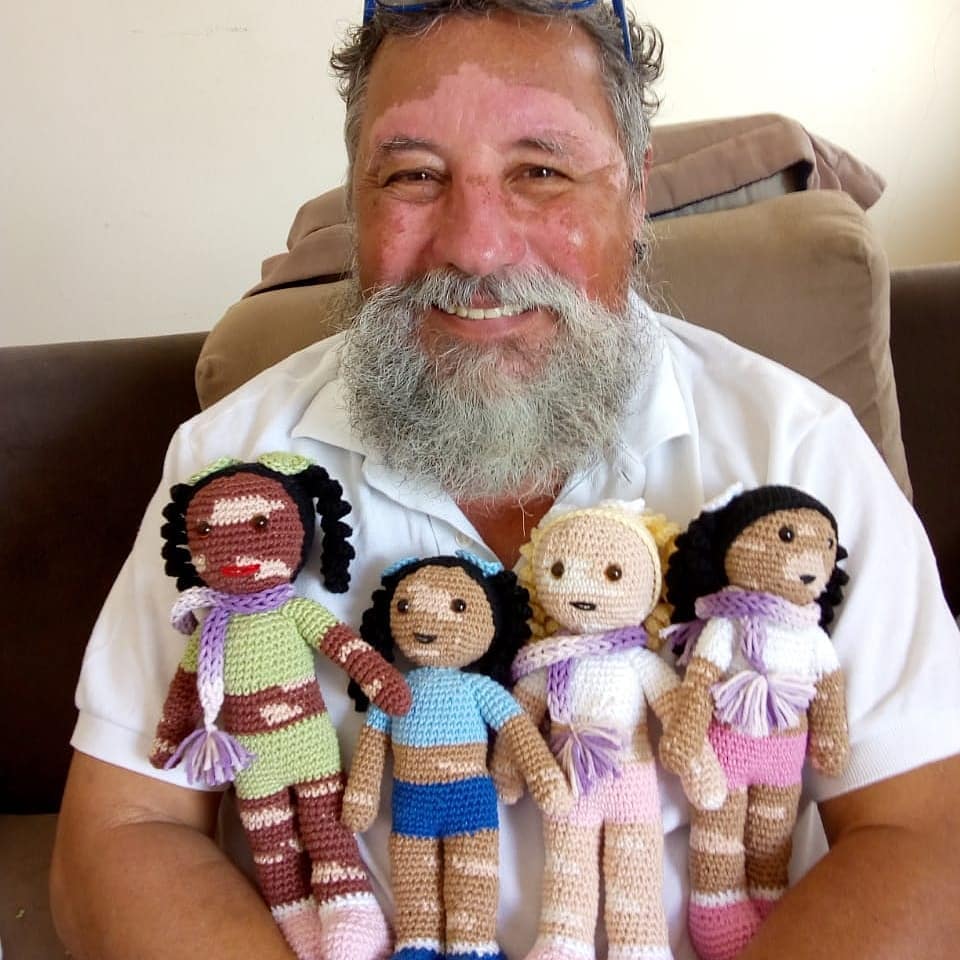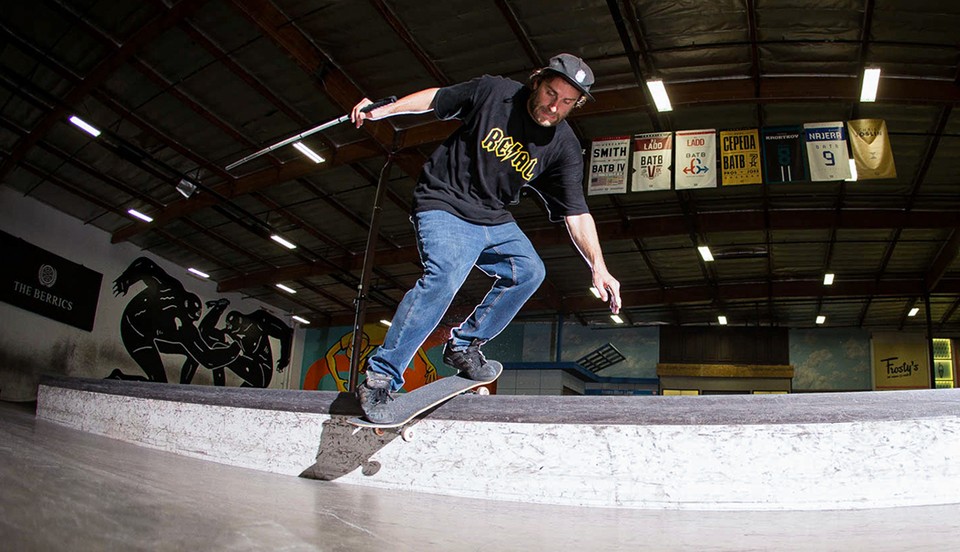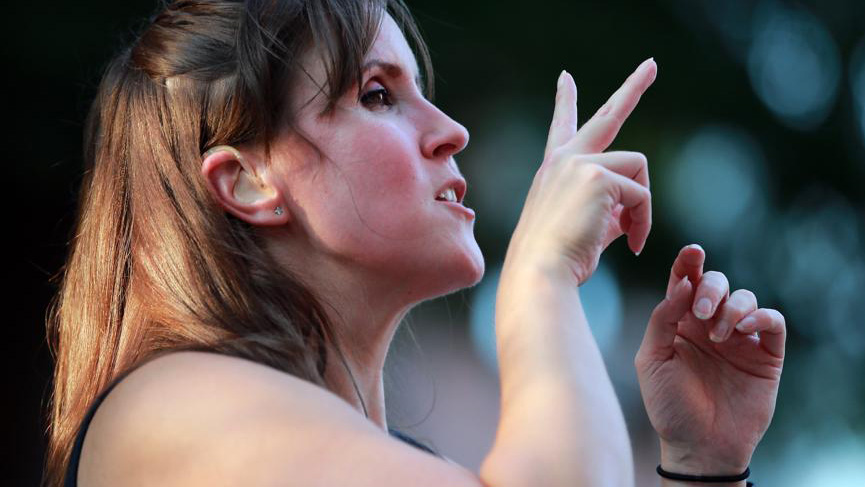Three awesome disabled people and their art.
Sometimes I have too many tabs open on my internet browser because I can’t bring myself to close out the uplifting stories I enjoyed reading so much. So I decided to start doing this periodic roundup of articles on disabled people doing cool stuff… I will dedicate a post to celebrating those open tabs lingering in my heart, mind, and desktop at the end of each month. The articles are not necessarily published recently – I just happened to read or revisit them at this time. This roundup features DeafBlind dance instructor Kerry Thompson, Blind skateboarder Dan Mancina, and a doll-maker with vitiligo named João Stanganelli. Each person uses their art and performance to empower themselves and others. Keep scrolling to get to the featured articles!

When he had to stop working due to a heart problem, grandfather João Stanganelli decided to learn how to crochet. Initially, he wanted to do something special for his granddaughter by making her a doll. He made her one with vitiligo like himself. He got so much positive feedback from the Brazilian press and public that he is now expanding into creating dolls with other disabilities! I saw photos of a doll with a white cane, and another with a wheel chair. Check out the full article here on the Bright Side website.

The next story is about Blind skateboarder Dan Mancina. He already skated before he identified as Blind. He retaught himself to skate with a white cane after his vision loss progressed, and now he does all kinds of trainings and workshops for Blind kids. I already enjoyed watching his videos on instagram, so I was super excited when skate company Deluxe published this in-depth interview with Dan on their website.
And, last but not least, I’m sharing this article written by Kerry Thompson on her journey learning Braille: “Dot by Dot, Step by Step.” If you know about DeafBlind celebrity Haben Girma, then you may recall her frequently referring to a Blind dance teacher who opened up the world of dance to her at a youth summer camp program. Kerry Thompson is famous in her own right, with many Boston-area media outlets highlighting her disability-inclusive dance instruction at the Blackstone Community Center. Kerry got her MA from Harvard in human development and psychology. By day, she is the information and program coordinator for the Disability Rights Fund.

Out of the many articles and videos on Kerry’s dance instruction, I chose to feature the piece on Braille for a couple of reasons. First of all, the entire article is written by Kerry herself in her first-person voice. It’s so important to read commentary in the words of disabled people because, no matter the good intentions of us hearing-sighted abled allies, we can never articulate the experience quite like our loved ones who live those disabilities on the daily. Plus, sometimes preferred terminology and framings shift within disability community spaces, so we allies need to be constantly updating our knowledge even if we think we have it all down.
Second of all, Kerry just started identifying as DeafBlind within the past few years. This article about learning Braille narrates her coming to terms with that identity and changing her communication and information technology systems. Although she was already identifying as Blind many years ago when she taught dance to Haben Girma, her residual vision enabled her to continue reading lips and signing. Now, with the help of her affinity for dance, she is moving more and more into the tactile realm of communication. Her journey illustrates the power of ProTactile philosophy and practice, and the ways in which DeafBlind people naturally cultivate the tactile even when larger society constantly privileges vision and hearing.
I hope you enjoyed the articles. Since I name-dropped her twice in this post, I think my next post has to be a review of Haben Girma’s new book, Haben: The DeafBlind Woman who Conquered Harvard Law.
